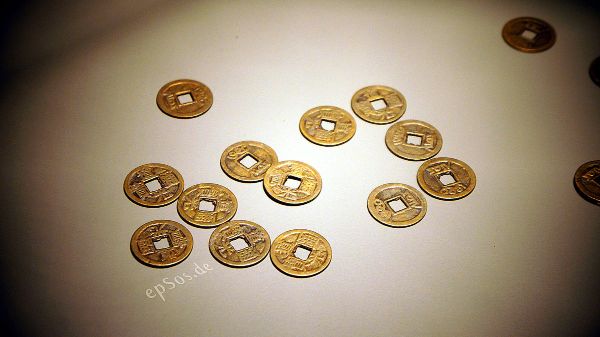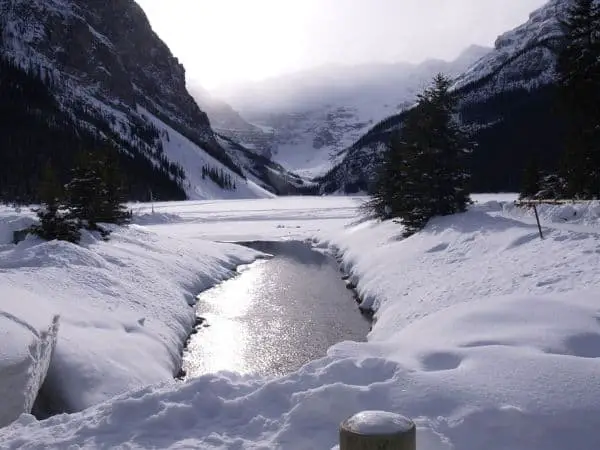
The beautiful state of Oregon is home to many lost treasures that are waiting to be found. Treasure hunters have been seeking these treasures for hundreds of years, but they refuse to give up their location.
With vast, majestic mountains and the lush prairies and valleys, Oregon has many places where there are many treasures hidden away or lost forever.
From buried pirate treasure and shipwreck treasure to buried loot of outlaws, there are many intriguing tales of lost treasure in Oregon.
Quick Recommendation for treasure hunters: There are so many ways and tools that can help you find treasures. The tool that I actually recommend is using a Metal Detector. Indeed, while there so many expensive models out there costing 1000s of dollars, I still recommend using a mid-level machine that should not cost you that much. In fact, if you don’t have a big budget, I recommend using this quality metal detector that should be affordable for most average hobbyists out there. It has more than enough features you will need to find most treasures buried in the ground.
Without further ado, here are some of the most popular tales of lost treasures in Oregon …
1. Neahkahnie Mountain and its Buried Pirate Treasure

Perhaps the most famous legend of lost treasure comes from Oregon’s Neahkahnie Mountain. The majestic Neahkahnie Mountain is known for being home to a lost pirate treasure that treasure hunters have been looking for hundreds of years.
A Clatsop legend has it that in the late 1600s, Spanish pirates sailed a ship into the Nehalem Bay off the coast of Oregon. Some versions of the story state that the ship sank in the bay, while other stories say that the ship put down anchor.
Whichever version of the story is to be believed, the Clatsop Indians observed from far away as the group of Spanish pirates carried out a large treasure chest from the ship and brought it onshore, carrying it up to a bluff at the base of the Neahkahnie Mountain.
The pirates then began to dig a deep hole and put the treasure chest inside it. They then also threw a dead crew member on top of the chest and filled up the hole. The pirates then boarded their ship and went away, never to be seen again.
A 100 years after, when the Corp of Discovery and Lewis and Clark found their way to the coast of Oregon, they were told of this pirate treasure legend when they started trading with the Clatsop Indians.
For centuries after this, treasure hunters have continued to dig holes all over the base of the Neahkahnie Mountain to search for this buried pirate treasure chest.
In fact, in the 1870s, a man named Pat Smith actually came the closest when he found some rocks that had arrows and crosses drawn into them and the DEW carved alongside.
Such was the determination to find this treasure that two treasure hunters even died when the hole they were digging caved in on them. This happened in the 1930s.
After many mishaps and so much digging happening at the base of the mountain, the government has banned digging in this area.
The area itself is now part of the Oswald West State Park, which comes under the authority of the Oregon Parks and Recreation Department.
Due to this, treasure hunting is no longer allowed. So, if this pirate treasure is still buried there, there is a good chance that it may never be found.
2. Lost Chinese Gold in Auburn

The ghost town of Auburn is located along the beautiful Powder River. In the 1860s, Auburn used to be famous for being a gold rush boomtown.
It was also the biggest community in Eastern Oregon at the time. After the gold got mined from this area and a new gold rush began in Idaho, the townspeople slowly started moving out, leaving the town almost deserted. Even today, a handful of people actually live in Auburn.
As per the treasure tales, it is believed that in the 1860s, a Chinese merchant buried nearly 400 pounds of gold nuggets and gold dust near the Chinese cemetery in Auburn.
If this gold is still buried there, it is estimated to be worth millions of dollars today. The ghost town of Auburn is located just around nine miles southwest of Baker on the Powder River in Oregon.
3. Lost Loot of Horsethief Meadows

Looting of stagecoaches was a common occurrence during the 1800s in Oregon as well as many other parts of the US.
Since the stagecoaches were the main transportation method for moving money and valuables from one place to other, robbers and outlaws made a good amount of money by looting these.
This story is set in the 1880s when a stagecoach got robbed of $25,000.
It is believed that the robber had a cabin that was discovered in 1886 by a man named Phillips and another man hired by Phillips to help find the treasure.
Both of them believed that this stagecoach treasure was buried near the robber’s cabin that was located in Horsethief Meadows in the Hood River Valley of northeastern Oregon.
4. Lost Pot O’ Gold at Fort Grant
Fort Grant was a small community and outpost that existed in the 1850s. This was during the famous Rogue River Indian Wars.
This treasure tale states that the fort had a paymaster as there were no banks in that region. At the same time, the miners who worked in the area also needed to have some type of security for their gold coins and gold bullions.
So, the work of the paymaster was to hold onto the gold for the miners and used to maintain records of what he had been given.
It is said that the paymaster would deposit all the gold that he received from the miners in a big iron kettle and bury it in the ground for safekeeping. He kept the place a secret and did not tell anyone the location of where he buried it.
However, one day the paymaster suffered a stroke that left him unable to speak. As he lay on his death bed, he attempted to draw a map of the location where the kettle of gold was buried but died before he could complete it. The miners kept on searching for it, but they could never recover it.
It is still presumed that the kettle of gold still remains buried somewhere in the area where Fort Grant once stood, somewhere between Medford and Ashland in Oregon.
5. Treasure of the Ghost Town called Althouse

Althouse is a ghost town located on County Route 46, halfway between the Oregon Caves National Monument and Cave Junction.
Many of these old ghost towns still have many relics and treasures buried, just waiting to be discovered.
In fact, in Althouse, there already have been many treasures, both large and small, that have been found by treasure hunters. However, you need to obtain permission before entering the town.
6. Auroria Ghost Town Treasure
Another famous treasure tale is from the ghost town of Auroria. Auroria is located on the other side of the creek from the present-day Auroria.
In the past, a treasure hunter found a large cache of gold in a ghost town very close to Auroria. There are many rumors that Auroria also holds several buried treasures.
7. Treasure buried in Granite
As mentioned above, Oregon is home to many ghost towns, and many of these old towns are famous for the many lost treasure stories associated with them.
Granite is another such ghost town located on the beautiful Granite Creek, just 40 miles west of Baker. The town of Granite was founded in 1862, and it was known by the name of Independence at that time.
It was a major center of gold mining, and many old relics and possible treasures are still believed to be buried here by the past residents.
8. Stagecoach Robbery and its Loot buried near Louise Creek

Louise Creek is located just north of Grants Pass in Oregon. In 1890, it was here that a stagecoach was looted, and the robbers escaped with the loot.
However, the outlaws were all shot dead within a short time after the robbery. But before the last man died, he told some of the men from their gang that the loot was buried a few 100 yards from the place where the stagecoach was looted.
After this, many people and the gang members as well searched for the treasure for several years, but it was never found.
Then suddenly, in 1933, a man named C.L. Eubanks was searching for gold in the area when he found a tree that was carved with the date 1890 on the trunk.
The letters MLP and LPM and the words “go-to” were also engraved on the trunk. There was more to the message, but it had become unreadable by then.
Eubanks continued to search for that treasure all summer long but never found it. It is believed that the lost loot is still buried somewhere along Louise Creek, north of Grants Pass.
9. Treasure of the Skeleton Mountain

As the story goes, an outlaw confessed to having buried a payroll worth $60,000 in gold coins approximately 20 miles east of Glendale on Skeleton Mountain.
Skeleton Mountain is located on Route 5 in Jackson County of Oregon. It is said that the outlaw stole the coins from a stagecoach.
10. Graveyard of Ships
There are many treasures believed to be buried between Fort Stephens, at the northwest corner of Oregon, and Tillamook Bay, nearly 50 miles to the south of this region.
This area is famously referred to as the graveyard of ships as there are over 200 shipwrecks on this coast. Along the beach, many old relics and coins have been found washed up from these shipwrecks.
So if you want to try your luck with a beach detector or an underwater detector, the graveyard of ships is said to be home to many lost treasures.
11. Treasure of the Sexton Mountain Pass
Located at some point near the Sexton Mountain Pass, on the charming Rogue River, just ten miles northwest of Grants Pass is said to be a huge treasure of gold bullion.
The treasure is believed to go back all the way to the 1850s when Indians buried loads of gold bullion taken from a band of outlaw Indians who had raided several mining camps.
12. Treasure of Harney County
The Owyhee Desert is an arid region with a unique landscape full of volcanic rock, canyons, sagebrush, and grass.
This desert spans not just Oregon but also northern Nevada and southwestern Idaho. There are stories that there is a hidden mine in this desert. In the 1870s, soldiers who were stationed at Fort Harney had fought an Indian uprising.
While they camped out in the Owyhee Desert, one of the soldiers is believed to have found gold nuggets.
However, with duties weighing in on them, they were not allowed to explore further. On returning to the fort, they informed others of their find, but others who searched for more gold nuggets were not able to locate the mine again.
Around four decades later, though, a sheepherder working at the exact location is said to have found the mine but died soon after without telling the exact location.
Though most people doubted the claims of the sheepherder, but after this death, several gold nuggets were found in his belongings.
13. Treasure buried in Josephine County
In 1878, a German gold prospector named Karl Meyer sought shelter under a rock ledge to get away from a storm along the Miller Creek.
While he was waiting out the storm, he saw a badger go into a large hole in the nearby rocks. After the rain stopped, out of curiosity, he widened the hole and crawled through it to reach a cave.
Here he found a large vein of gold. Meyer broke off several pieces and had them assayed. It was found to be worth $415,000 per ton. After returning back to Miller Creek, though, he was unable to find the cave again.
He continued to search for this cavern for the next many months, but without success. Meyer died of tuberculosis without ever finding the cave again.
14. Treasure of Jackson County
In the 1860s, an old miner was believed to have buried around $80,000 worth of gold dust near Jacksonville.
When the miner returned several years later to retrieve the gold, which was located in the area of J N T Miller’s field at that time, he spent a long time digging up a huge amount of the field, but he could never his buried cache of gold dust again.
15. Treasure buried at the Ruins of Oak Point
The town of Oak Point was founded in 1810. This town, now lying in ruins, is located on the beautiful Columbia River, just four miles north of Clatskanie in Oregon.
This town used to be a major river port and trading center at that time, and a lot of money used to flow through it regularly.
Towards the end of the 1800s, the town of Oak Point was destroyed by a devastating flood. Many people’s livelihoods got lost, and many of the local population’s treasures got buried under rubble and mud from the flood.
Today the ruins of Oak Point have become a perfect place to take your metal detector and hunt around. However, make sure that you get the required permission before venturing onto any private land.
Final Thoughts
Hopefully those lost treasures in the state of Oregon got you excited to start your own adventure to hunt for treasures yourself, whether in Oregon or any other state.
If you are aware of any other lost treasure in Oregon or you’ve got any story you want to share, let me know so I can feature it in this article.
